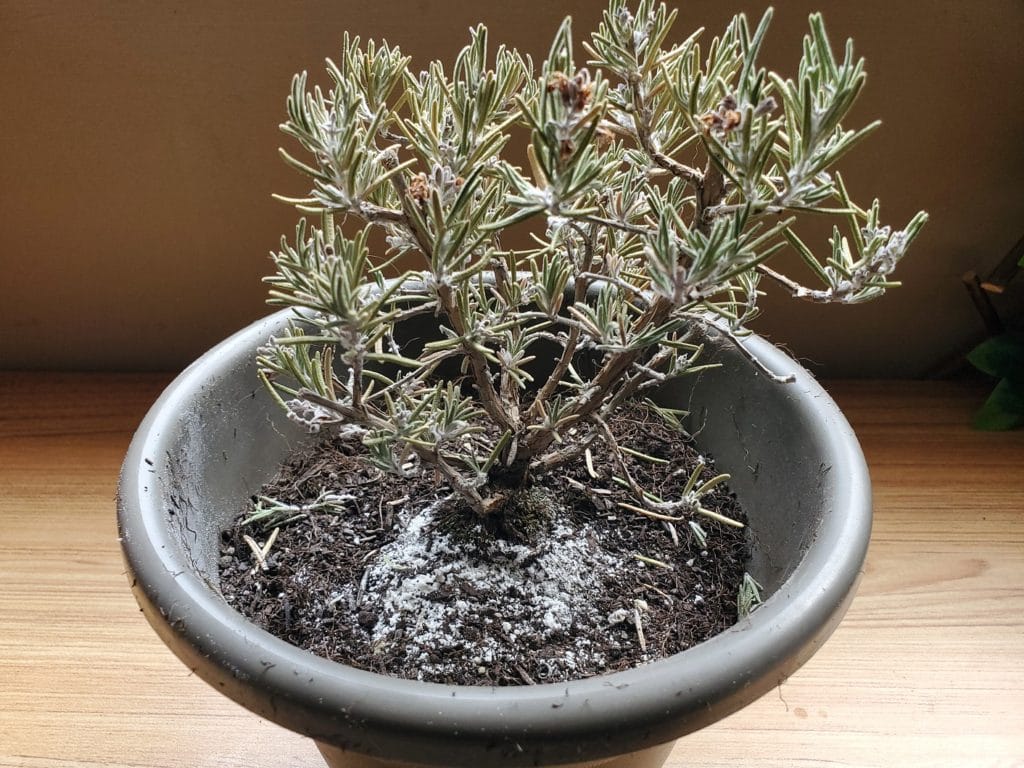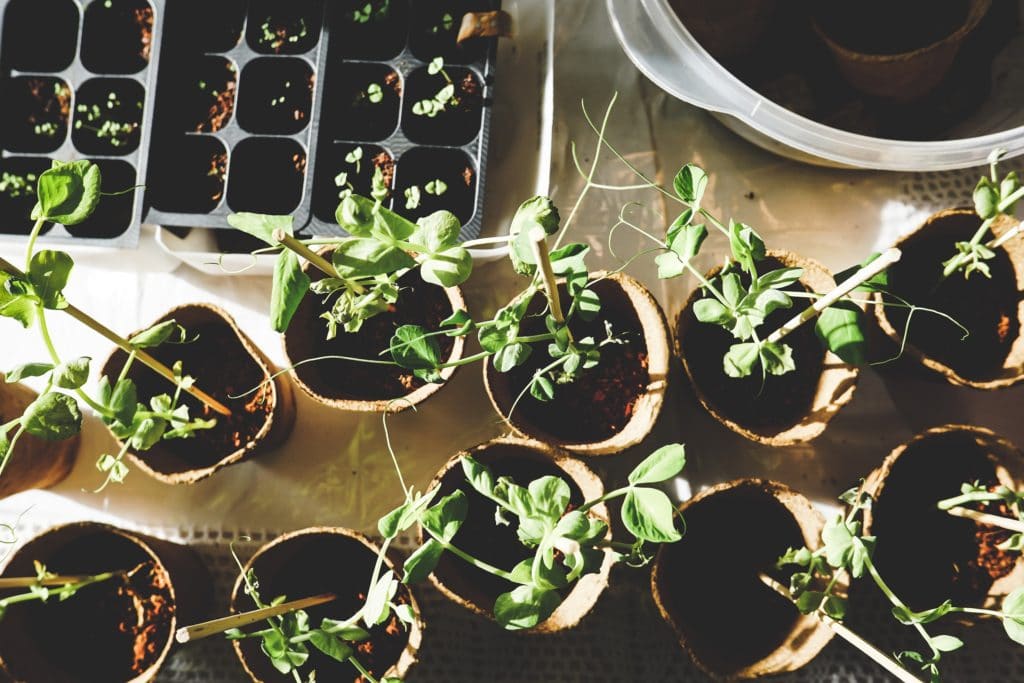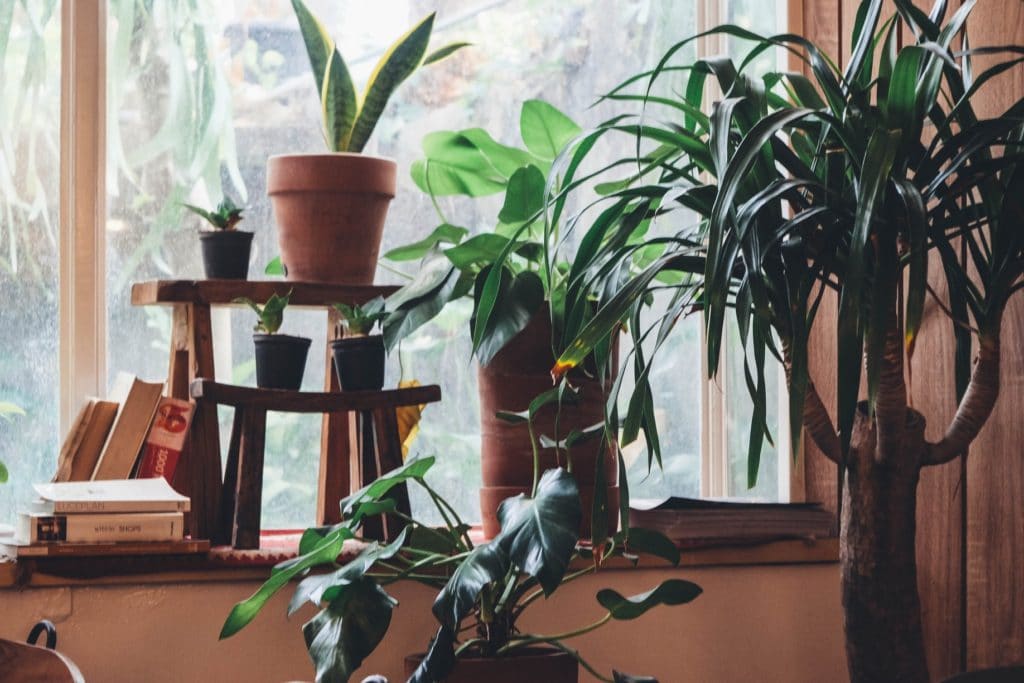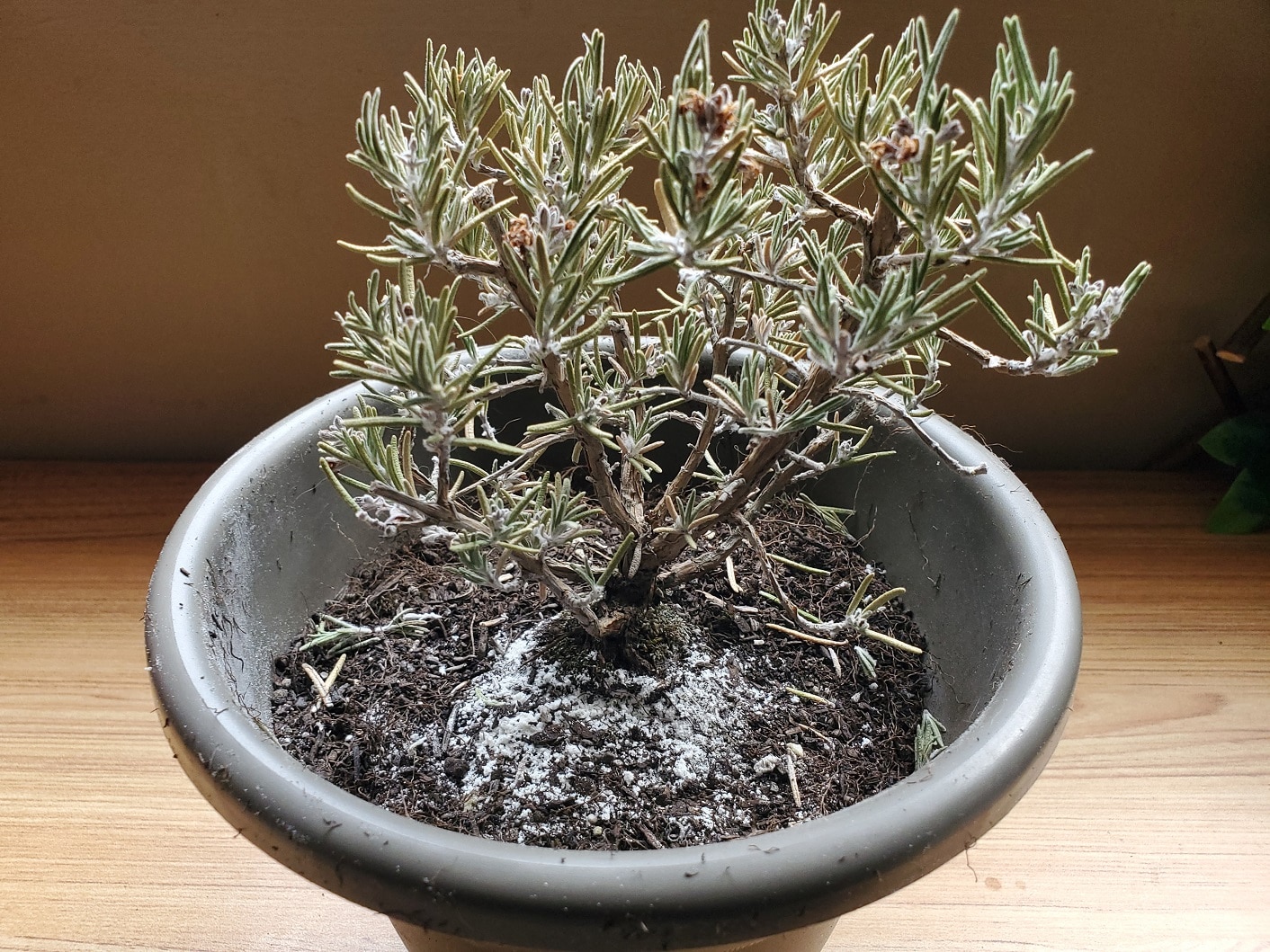Why is My Soil Turning White? – How To Fix Moldy Soil

Overwatering. Too much water creates an environment which allows mold to thrive in houseplant soil. Watering once per week is a good rule of thumb for most plants. Ensure your plant pot has holes in the bottom to allow it to drain excess water.
Here is how to fix white and moldy soil:
- Quarantine. Keep it away from your other plants, mold is contagious and can easily spread to other places.
- Repot. Be sure to discard moldy soil. Rinse off plant to ensure you have removed all the remaining mold and give your plant a new full pot of fresh potting soil.
- Stop Overwatering. Mold thrives in a humid environment, make sure you only water when necessary.
- Improve Drainage. Drill additional holes into the bottom of your pot, most plants do not like sitting in water
- Humidity. Too much humidity in your space will give molds and fungus’ a chance to spread faster.
- Fungicide. As a last resort only, these can contain harmful chemicals and are generally not recommended or necessary in your home. See below for some natural home remedies for dealing with fungus.
The white powdery appearance is caused by a saprophytic fungus and is generally not dangerous to humans and does not harm your plant significantly. Overtime however, mold can cause the plant to wither, impede growth and produce bad tasting crops. Yuck!
How to Prevent White Mold on Houseplants?
Simply by removing the dead plant debris from the soil or improving ventilation in the surrounding area can have a big impact on preventing future mold outbreaks. Preventing mold from appearing on your plants and in their soil is the best way to ensure you’ll never have to deal with moldy soil again! Follow these simple tips below to help stop mold and fungus from ever getting a foothold in your houseplant soil:
- Use fresh sterile soil when you repot your plant, mold spreads easily in soil and is hard to remove.
- Quarantine any moldy plants to prevent the mold from spreading, avoid touching or inhaling the mold.
- Using a spoon, scoop top layer of soil removing visible mold residue and discard into trash.
- Using a damp paper towel, wipe mold off leaves and use a new towel each time to prevent spreading.
- Remove any fallen leaves and other fallen plant debris from top of the soil. Trim off dead parts of plant.
- Move your plant closer to the light to allow it more light to help dry out soggy soil.
- Improve ventilation in the plant’s surrounding area, this will help dry out soil as well.
- Inspect the walls, ceiling and floor in your home to ensure you have no mold spreading to your plants.
Why is My Soil Turning Green and Moldy?
Algae. Too much sun combined with overwatering soil can cause a layer of green algae to form on the top of your soil. The algae feeds on the energy of the sun and eats the nutrients in the soil to create a tiny green carpet across the top layer of all your plants. Here are the reasons why your soil is becoming covered in green algae:
- Overwatering. Too much water caught in the soil is the perfect environment for algae to proliferate.
- Too Much Sun. Algae thrives in direct sunlight, pull your plant out of the direct light to hinder algae growth.
- Poor Drainage. Not allowing your plant to drain will keep excess water stored in your soil.
- Too Warm. Algae loves a cozy warm space to live, reduce the heat to help prevent algae from growing.
- Too Humid. A wet atmosphere is exactly what algae needs to flourish, get a hygrometer and monitor the humidity around your plants, it should not exceed 55-60% (in most cases)
How to Remove Algae from Houseplants?
Algae is not known to cause harm directly to houseplants, however, because algae lives on the soil, it also competes for the nutrients in the soil and can prevent your houseplant from flourishing to it’s fullest potential. For that reason, you may want to remove this colorful green layer and here’s how you do it:
- Dry Out Plant Completely. A dry soil will help kill off the algae and make it easier to remove.
- Scoop off the layer of algae from the top of the soil using a spoon, be sure to get both the alive green parts and the dead black crust it leaves behind.
- Discard in Trash. Make sure you throw out the algae, otherwise it may start growing where you left it behind.
- Check Soil. Inspect your potting soil supply for algae, mold and other pests and throw it away if you find anything undesirable living in it.
- Clean Area. Use a damp paper towel to wipe off any algae growing in the vicinity of your plants to prevent future outbreaks.
How to Prevent Algae from Forming on your Plants?

- Less Sunlight. Pull your plant away from the window and give it less direct light. (Less than 16 hours)
- Reduce Heat – algae prefers to grow at temperatures between 68-86 F (20-30 C)
- Improve Drainage. Put a pebble tray beneath your plant to catch excess water. Undrained, soggy soil will encourage unwanted algae growth.
- Decrease humidity. A dehumidifier may be necessary to remove excess moisture in the air.
- Sterile Soil. Use only soil that you know is uncontaminated. Toss any soil you suspect may be infected.
Make sure the green layer you are removing is actually algae, some mosses can look similar and are mostly harmless as well. Algae are eukaryotic organisms. They have no stems or roots and grow mainly on top of water and have a wet and slimy feeling when touched.
Natural Home Remedies for Dealing with Mold and Algae on Your Houseplants:

Harsh chemicals have negative affects on all living things, especially your delicate houseplants. Before you resort to using expensive, toxic, store-bought crap, try using these cheap home remedies that are probably just sitting in your cupboard and are highly effective against molds / algae and other pests as well.
- Cinnamon. Sprinkle a bit of cinnamon around the roots and soil for a harmless way to inhibit the growth of mold, fungus, algae and it will also help keep some other insects away too.
- Dish Soap and Water. A few drops of soap and water wont harm your plant and will rid your houseplant of a surprising amount of pest that want to hurt it.
- Baking Soda and Water. Acts as a fungicide that will not harm most plants. For delicate plants test it on a small portion first. 1 teaspoon of baking soda per liter/0.25 gal water.
- Apple Cider Vinegar. Is an effective fungicide but usually requires multiple applications to work. 1 tablespoon per liter/0.25 gal water in a spray bottle. Spray on infected areas.
- Aspirin. Crush 1 it into 1 liter/0.25 gal of water and spray on your plants as an effective antifungal treatment for your plants during the spring / summer seasons.
- Fertilizer. Regularly adding fertilizer to soil will also help prevent mold and algae from taking hold.
Will Moldy Soil Damage My Plants?
No, moldy soil will not harm your plants. However, mold will compete for the same nutrients your plant requires and therefor can hinder the growth of your plant overtime. Presence of mold is also an indication of unhealthy soil leading to root-rot.
Why is My Soil so Hard and Dry?

Too Compacted. Hard soil could be a sign that you pressed too hard when inserting the soil around the roots of the plant. Also, overtime, a plants soil can become hard and compacted if they lack water and the soil mixture lacks mulched up bits.
- Repot your plant with new fresh soil purchased from a store or mixed up yourself.
- Water your soil thoroughly after putting your plant in its new pot.
- Direct sunlight will dry up your plants quicker and they will require more water which will harden the soil. Pull back from the light to allow the soil to remain softer.
- Reduce heat. Too much heat will dry up the soil faster and cause it to become hard and dry.
- Increase humidity. This will help keep the soil and plant moist and reduce the hardness in the soil.
How to Dry and Drain Wet and Soggy Soil?
There are several ways to quickly drain out a plant that has been overwatered. Overwatering is one of the quickest ways to kill a beloved houseplant if you are not careful. Follow these simple tips for removing excess water from a drowning plant:
- Remove bottom tray or outer pot and place in sink to allow excess water to drain for 10-20 minutes.
- Put in the sun or in a warm area in your home briefly to allow some of the water to evaporate away quickly.
- Reduce humidity and increase ventilation, usually opening a window on a sunny day is enough.
- Remove and soft and brown roots that are suffering from rot.
- Drill some holes in the bottom of the pot to allow water to drain out faster.
- Gently squeeze the sides of the pot to help remove water stored in the soil.
- Use paper towels to absorb excess moisture from the top of the soil.
- Repot if necessary, a whole new fresh set of soil may be drastic, but doing so could save your plant from drowning, or from getting root-rot in the future.

